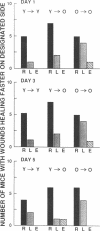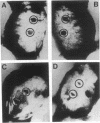Abstract
Application of peritoneal macrophages to experimentally induced cutaneous wounds of old mice accelerates healing to levels almost comparable to those of untreated young animals. Slightly greater acceleration is observed when macrophages are obtained from young as opposed to old donors. These findings are consistent with a defect in macrophage function as a cause of impaired wound healing in senescence and suggest a possible therapeutic strategy.
Full text
PDF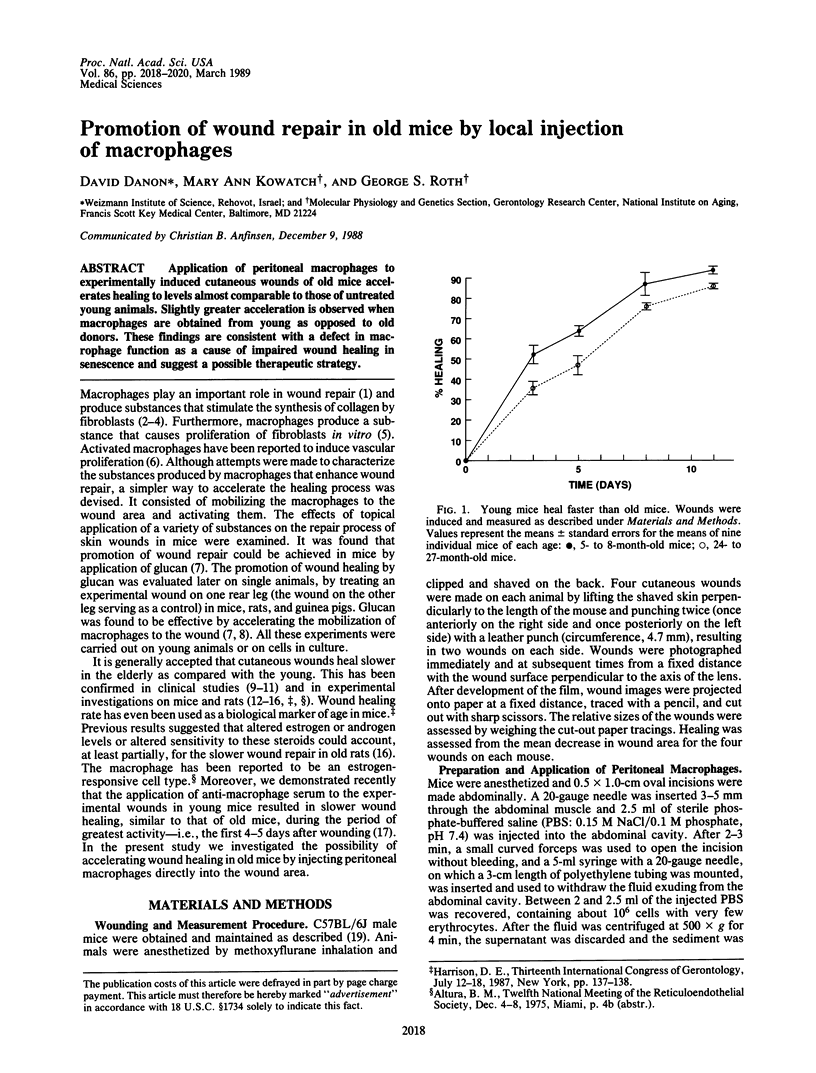
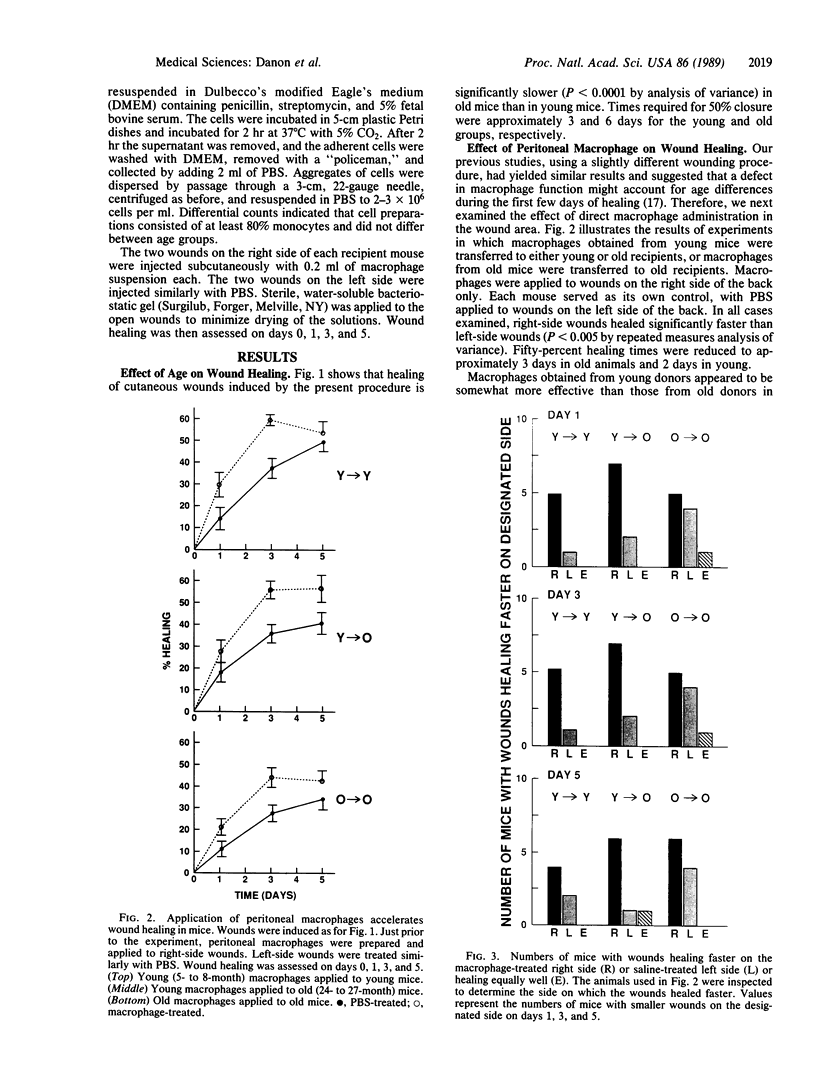
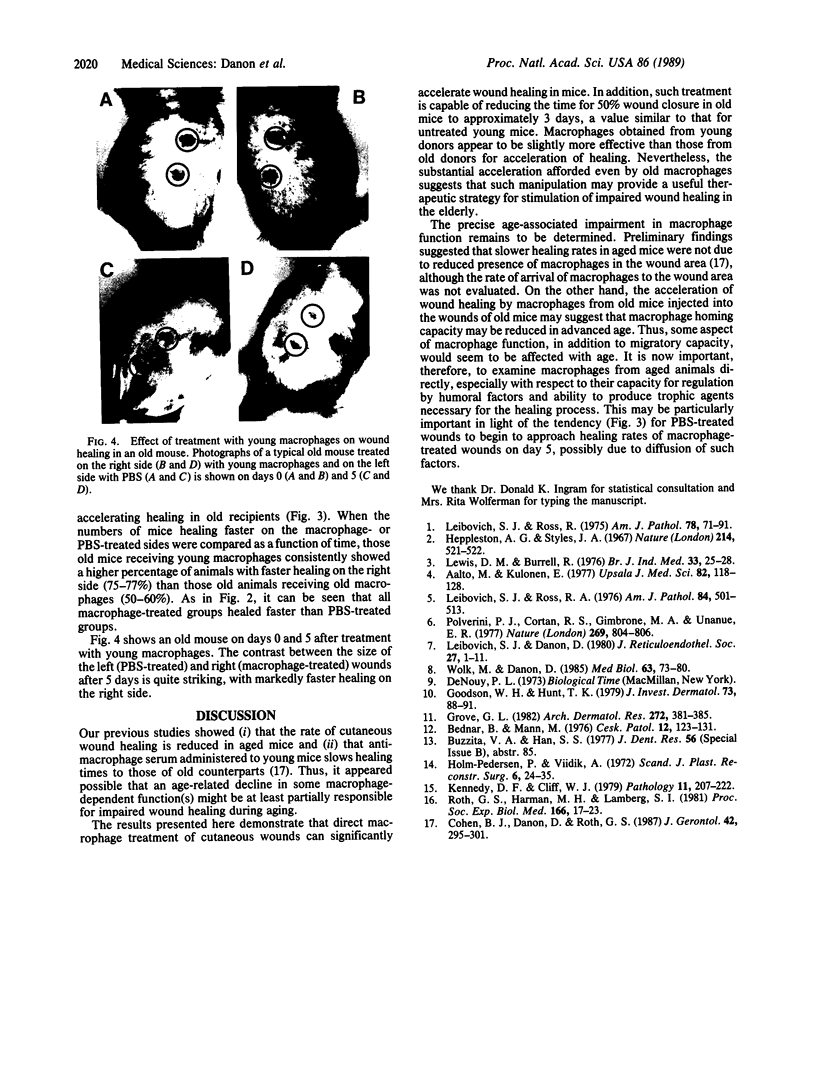
Images in this article
Selected References
These references are in PubMed. This may not be the complete list of references from this article.
- Bednár B., Mann M. Průbeh hojení kozních ran mladých a starých krys. Cesk Patol. 1976 Aug;12(3):123–131. [PubMed] [Google Scholar]
- Cohen B. J., Danon D., Roth G. S. Wound repair in mice as influenced by age and antimacrophage serum. J Gerontol. 1987 May;42(3):295–301. doi: 10.1093/geronj/42.3.295. [DOI] [PubMed] [Google Scholar]
- Goodson W. H., 3rd, Hunt T. K. Wound healing and aging. J Invest Dermatol. 1979 Jul;73(1):88–91. doi: 10.1111/1523-1747.ep12532775. [DOI] [PubMed] [Google Scholar]
- Grove G. L. Age-related differences in healing of superficial skin wounds in humans. Arch Dermatol Res. 1982;272(3-4):381–385. doi: 10.1007/BF00509069. [DOI] [PubMed] [Google Scholar]
- Heppleston A. G., Styles J. A. Activity of a macrophage factor in collagen formation by silica. Nature. 1967 Apr 29;214(5087):521–522. doi: 10.1038/214521a0. [DOI] [PubMed] [Google Scholar]
- Holm-Pedersen P., Viidik A. Tensile properties and morphology of healing wounds in young and old rats. Scand J Plast Reconstr Surg. 1972;6(1):24–35. doi: 10.3109/02844317209103455. [DOI] [PubMed] [Google Scholar]
- Kennedy D. F., Cliff W. J. A systematic study of wound contraction in mammalian skin. Pathology. 1979 Apr;11(2):207–222. doi: 10.3109/00313027909061947. [DOI] [PubMed] [Google Scholar]
- Leibovich S. J., Danon D. Promotion of wound repair in mice by application of glucan. J Reticuloendothel Soc. 1980 Jan;27(1):1–11. [PubMed] [Google Scholar]
- Leibovich S. J., Ross R. A macrophage-dependent factor that stimulates the proliferation of fibroblasts in vitro. Am J Pathol. 1976 Sep;84(3):501–514. [PMC free article] [PubMed] [Google Scholar]
- Leibovich S. J., Ross R. The role of the macrophage in wound repair. A study with hydrocortisone and antimacrophage serum. Am J Pathol. 1975 Jan;78(1):71–100. [PMC free article] [PubMed] [Google Scholar]
- Lewis D. M., Burrell R. Induction of fibrogenesis by lung antibody-treated macrophages. Br J Ind Med. 1976 Feb;33(1):25–28. doi: 10.1136/oem.33.1.25. [DOI] [PMC free article] [PubMed] [Google Scholar]
- Polverini P. J., Cotran P. S., Gimbrone M. A., Jr, Unanue E. R. Activated macrophages induce vascular proliferation. Nature. 1977 Oct 27;269(5631):804–806. doi: 10.1038/269804a0. [DOI] [PubMed] [Google Scholar]
- Roth G. S., Harman S. M., Lamberg S. I. Altered ovarian regulation of wound healing during aging. Proc Soc Exp Biol Med. 1981 Jan;166(1):17–23. doi: 10.3181/00379727-166-41017. [DOI] [PubMed] [Google Scholar]
- Wolk M., Danon D. Promotion of wound healing by yeast glucan evaluated on single animals. Med Biol. 1985;63(2):73–80. [PubMed] [Google Scholar]



